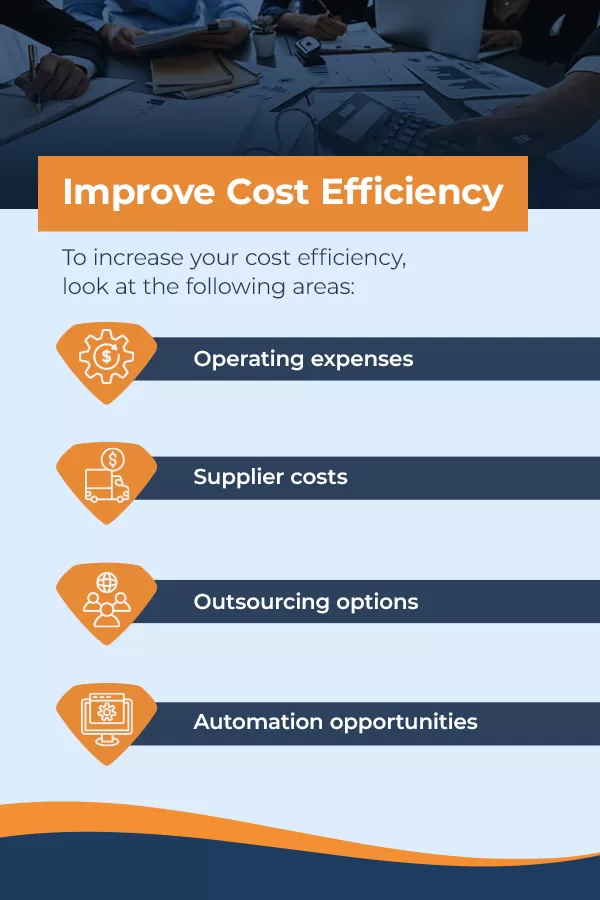When you run a small business, competition is fierce. You may not have the same scale or resources as large corporations, but there are still ways to make your business stand out in your area. Becoming more competitive involves several factors, from knowing your market to building brand awareness.
Competing with other companies isn’t a one-size-fits-all approach, but there are techniques you can apply to create the competitive advantage you’re looking for. Explore your options for how to compete with other businesses so you can pinpoint which opportunities are the right fit.
Before you can attempt to compete with other businesses in your industry, you have to understand the landscape. This process starts with market research to assess various factors like:

After collecting data and developing a stronger sense of your industry and competition, assess your current strengths and weaknesses. What are your unique selling propositions, and how can you communicate them to your audience? This initial conversation might spark marketing campaign ideas, product improvements and beyond. You should also approach your weaknesses honestly. Where does your company pale in comparison to competitors? What can you do to improve in this area?
Creating memorable and positive customer experiences is an excellent way to improve your reputation. When looking to improve the customer experience, you can:
It takes a lot to run a small business, and it’s easy for production costs to skyrocket as your company continues to grow. This makes it crucial to take stock of where your money is going and take steps to reduce your overall expenses.
To increase your cost efficiency, look at the following areas:

Customer retention is key to growing your small business. While retaining customers helps ensure consistent revenue, it can also help you save in the long term. Often, the cost of retaining a customer is much lower than the cost of acquiring a new one — studies show that costs can be as much as five to seven times higher.
A top strategy for boosting customer retention is offering loyalty or incentive programs. When customers get rewarded for patronizing your business, they’re more likely to return for more rewards. These programs can help grow your customer base, too. Customers are 73% more likely to recommend a company to others if it has a good loyalty program.

Generally, the key to fostering long-term relationships with your customers is proving value to them beyond the first purchase. While loyalty programs are one way to achieve this, fostering engagement through personalized communication and promotion unique to the individual customer is an excellent way to deliver additional value.
Competition between businesses demands agility and adaptability. Your organization needs to be ready to shift your overall strategy as the market changes.
A key practice for remaining agile is relying on a flexible business model. Build your strategy based on current market feedback and adjust direction as new feedback comes in. This flexibility could look like allocating more budget to marketing products during slow seasons or upping customer service support during peaks in demand.
To stay relevant, your small business needs to be willing to change and grow. Be open to experimenting with new products and services to better meet your client’s needs. Use customer surveys to learn more about what your buyers want and how you can best address these preferences. You might find avenues for product or service improvements, or discover a gap in the market your business can fill.
In part, agility and adaptability are connected to company culture. Encourage your employees to share ideas and innovate as a way to promote the right mindset for change and get the support you need to implement new ideas. Just as you survey your customers for their input, survey your employees to get their thoughts. Creating an environment for idea-sharing breeds innovation and makes your company more agile.
As a small business, your presence is valuable to the local economy. Engaging in community events can be a great way to connect with local customers and raise brand awareness meaningfully. For example, as a contracting company, you might partner with a local restoration business to fix homes after fire or flood damage.
Community events can also help you connect with local customers. Participating in parades, fundraisers, business events and more can make your name more familiar to community members, and increase the likelihood that people will contact you when they need your product or service.
Sustainability initiatives are another way to engage with your community. A commitment to reducing your carbon footprint and supporting more eco-friendly practices can help you align with local values and encourage interaction with your organization.
Most people connect to both large and small businesses online. If your small business has little to no online presence, it practically doesn’t exist. Improving your website, being active on social media and creating digital marketing campaigns can raise awareness of your brand and make it easier for new customers to find you.
A key digital marketing strategy is search engine optimization (SEO). SEO makes your site more visible to search engines and helps your pages rank higher on search engine result pages. This means it’s easier for buyers to find you based on related searches.

Social media engagement is an ideal way to highlight new products or promotions while raising brand awareness. For example, you can use social media posts to share educational content about your industry, keeping your customer base more informed and funneling them to your sales pages to encourage a sale.
You don’t have to grow your business alone. Building strategic partnerships with other organizations can help make your business more competitive and expand your reach. A complementary business relationship can also connect your team with more resources and expertise.
A good example of a business partnership is a cross-promotional campaign. A cabinetry company might offer a discount with a local tile dealer for customers looking to renovate their kitchens. This partnership drives more business for both companies and can grow the customer base for each. You can also establish referral programs with other local companies to create mutually beneficial relationships.
While you can connect with businesses in your area, you can also look for networking opportunities at industry events and conferences. It’s helpful to work with businesses that share the same audience or work in similar industries to ensure you support each other’s goals without being competitors.
Customer interactions are an important aspect of growing your business and staying competitive, but a constantly ringing phone line can interfere with other valuable tasks. When your phone rings more than your team can handle, turn to a call answering service like AnswerHero™.
When you partner with AnswerHero™, you can:
Finding ways to help your small business compete successfully with larger businesses can be the push you need for growth. With AnswerHero™, you have the support and freedom to focus on the responsibilities that help your organization expand. Our call agents are fully bilingual to communicate with English-speaking and Spanish-speaking customers. With our flexible, no-contract service and transparent pricing, you can have confidence in your partnership with our team.
Get in touch with us today to learn more about our call answering services for small businesses.
